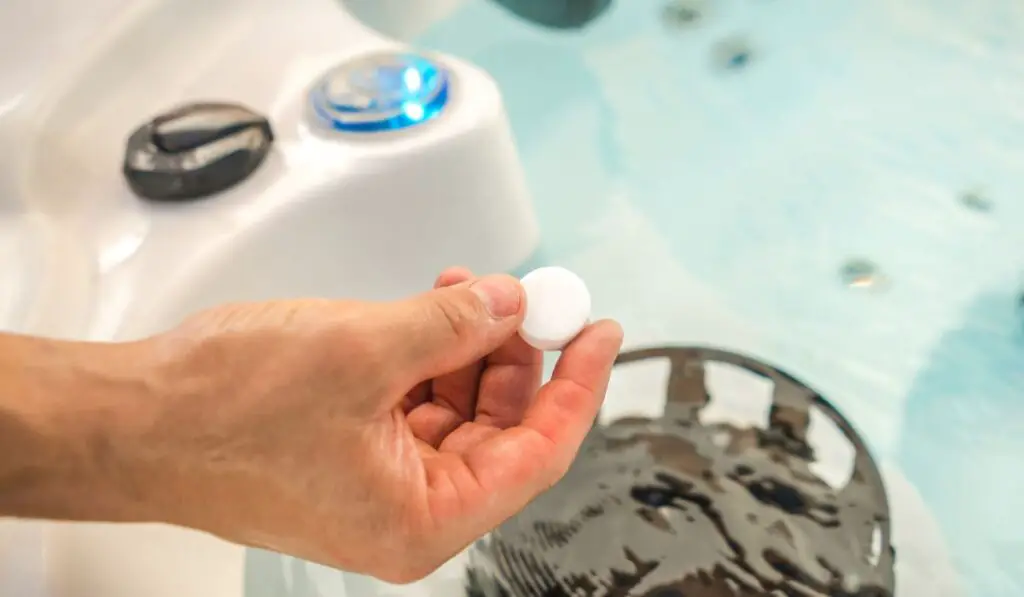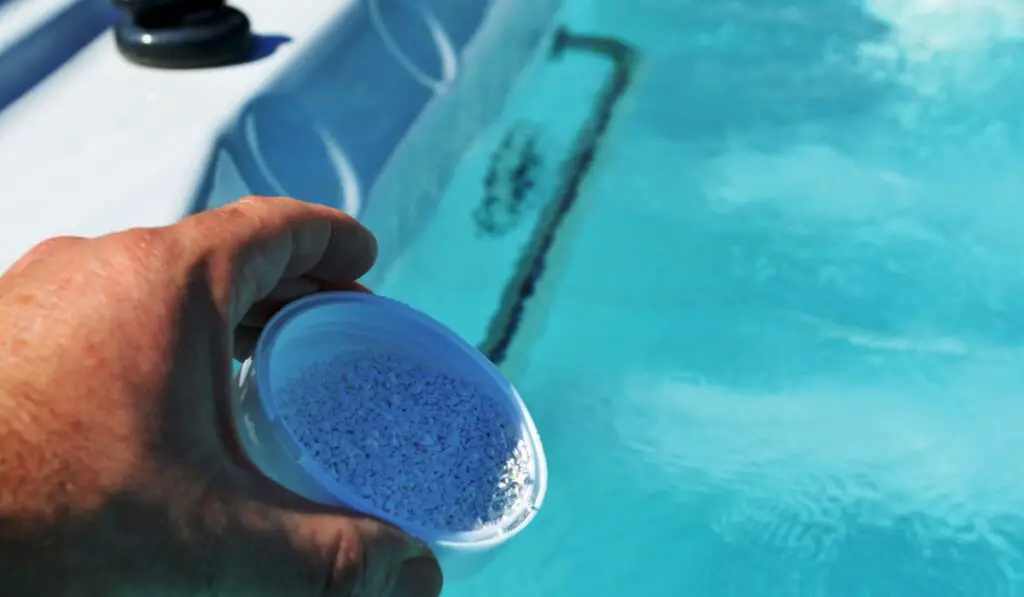Using the right chemicals is essential for a safe, clean, and pleasant-smelling hot tub. However, some chemicals like chlorine can be pretty harsh, leaving some spa owners wondering whether they can stop using chemicals altogether. So, how long will a chemical-free hot tub last?
A chemical-free hot tub won’t stay clean for more than 24 hours in most cases. Without chemicals, a hot tub becomes especially conducive to bacterial growth. The risk of contamination increases with every bather who brings in oils, dirt, lotions, and other foreign elements that affect water quality.
If you’re hoping to get away with a chemical-free hot tub, you may need to think twice. Let’s take a closer look at what hot tub chemicals actually do and why they’re so important to maintaining a safe, enjoyable atmosphere for bathers.
Do You Really Need to Add Chemicals to Your Hot Tub?

You need to add chemicals to your hot tub because they play a vital role in maintaining it and keeping it clean and safe for you and other bathers.
Aside from that, adding chemicals to your hot tub is important because of other factors such as evaporation, the environment, and people using the tub.
The beauty of the hot tub is that it’s constantly at a higher temperature than a pool or swim spa. However, this temperature causes water to evaporate more quickly. As the water evaporates, it leaves behind salts, minerals, metals, and unused chemicals.
Replenishing the water adds more salts, minerals, and metals. In time, the water becomes cloudy and saturated with dissolved solids. The water can also corrode the components of your hot tub and cause scale or stains to form on its walls.
Adding chemicals prevents these issues. Chemicals also eliminate foreign elements such as pollen, insects, grass, dirt, airborne dust, and leaves that the environment introduces into your hot tub — all of which can affect the water quality.
Additionally, the chemicals work to sanitize the hot tub after you hop out. Any time you and other bathers get into the tub, you carry things into the water, including body oils, lotions, and dirt on your skin. So, the more you use the spa, the more it requires chemicals to treat the water.
How Long Can You Use a Hot Tub Without Chemicals?
A hot tub without chemicals won’t be able to remain clean longer than 24 hours in most cases due to various contaminating factors like oil, grime, dirt, sweat, and germs that get washed into the water when you and other bathers enter the hot tub. Some bathers may also have urine and fecal matter residue on them.
Those contaminants can make bathing in a chemical-free hot tub a health risk in just a matter of days — if not hours.
Your chemical-free hot tub will create a conducive environment for bacterial growth. As we all know, bacteria thrive in warm places.
Imagine taking a dip in the same untreated water day in day out and having friends and family over to do the same. The water will quickly become gross, slimy, and contagious, right?
What Do Hot Tub Chemicals Do?
You need various hot tub chemicals to keep your water clean and safe, and to lower bacteria levels. Without using these chemicals, you could be putting yourself and other bathers at risk.
Here’s a brief overview of the different hot tub chemicals out there and what they do:
- Hot tub sanitizer kills bacteria in your tub water.
- pH increaser (on Amazon) raises the pH when your water is too acidic.
- pH decreaser lowers the pH when your water has high alkaline levels.
- Alkalinity increaser raises the alkalinity of your water when it’s low.
- No foam helps reduce the occurrence of foam caused by pollutants like perfumes and lotions.
- Shock treatments kill bacteria, eliminate contaminants and reactivate sanitizers.
- No scale prevents scaling and calcium solidification in your hot tub if you live in hard water areas.
- Calcium hardness increaser raises calcium levels in soft water areas.
Is There a Substitute for Chlorine?

There are several hot tub treatments on the market that serve as excellent alternatives to chlorine. They include the following:
Bromine
Bromine is by far the most common chlorine alternative. It comes in the same form as chlorine, and you can use it very similarly, making it an easy choice for those hoping to avoid chlorine use.
Bromine (on Amazon) is the number one go-to solution if you have sensitive skin, since it performs the same task as chlorine but with significantly lower harshness on the skin. Bromine also works well under high temperatures, making it ideal for hot tub use.
Ultraviolet (UV) System
A UV system is a great substitute for chlorine in a hot tub. It sanitizes your hot tub using radiation as the water passes by the UV bulbs through a tube. UV systems do a fantastic job of eliminating contaminants, but you’ll still need to shock the water to improve its clarity.
Salt-Based Systems
These systems do away with the need for chlorine or bromine. However, they don’t ultimately result in a non-chlorine hot tub because the process of electrolyzing the salt generates chlorine.
If you’re aiming to run an eco-friendly hot tub, then a salt-based system isn’t the way.
Ozonators
This system introduces ozone into the water. The only issue is that ozonators aren’t registered sanitizers, so you’ll need to use a sanitizer on top.
Ozonators can, however, reduce the need for sanitizers and regular shocking of your hot tub. They’re also a very costly alternative and sometimes call for hot tub modification.
Ionizers
Ionizers inhibit algae and bacteria growth in your hot tub by releasing ions into the water. Despite being natural hot tub treatments, they can’t sanitize your tub.
Therefore, you’ll need to keep a sanitizer on hand. But still, ionizers are a great alternative to chlorine and help reduce the amount of sanitizer your tub needs.
Non-Chlorine Shock
Unlike chlorine and bromine shocks, a non-chlorine shock (on Amazon) isn’t a sanitizer, but it oxidizes the water, eliminates contaminants, and improves water quality.
Additionally, it helps the chlorine in a hot tub work better and activates bromine in a bromine spa.
Enzyme-Based Treatment
Enzyme-based treatments, like this one from AquaDoc (on Amazon), are another terrific alternative and a natural way to stay on top of hot tub maintenance. They can quickly neutralize oils and organic materials that float on your water, making it unsightly.
Although you couldn’t formerly pair enzymes with other cleansers, modern-day enzymes can work to boost the effects of bromine and ozone-based sanitizers to help create a clean hot tub with minimal fuss.
If you still want to use chlorine, enzymes can also reduce the amount of chlorine you’ll need, leaving you with a clean hot tub while minimizing the adverse effects of chlorine.
